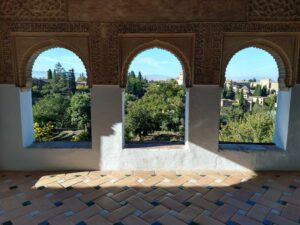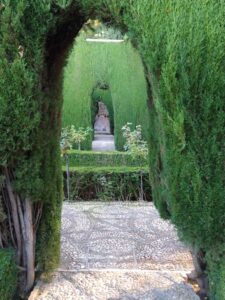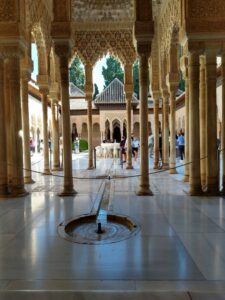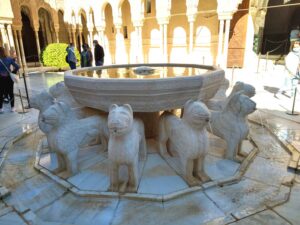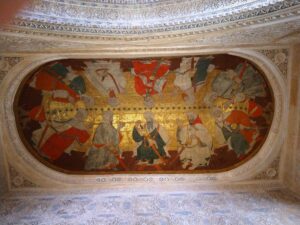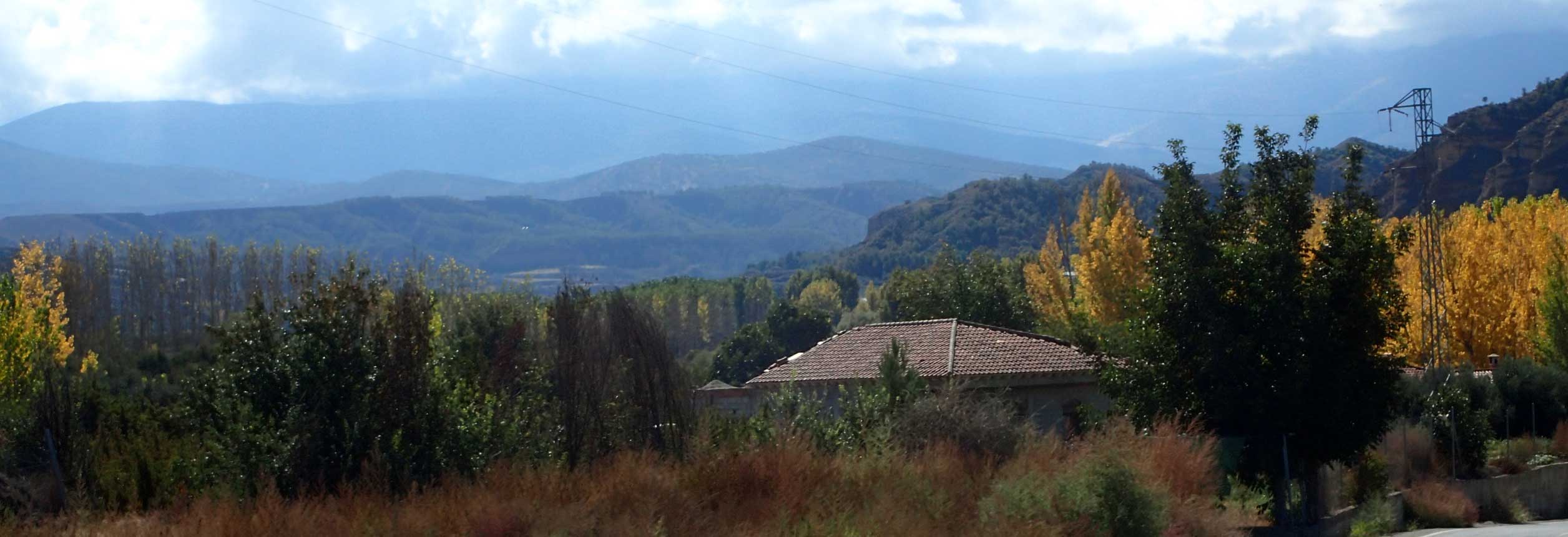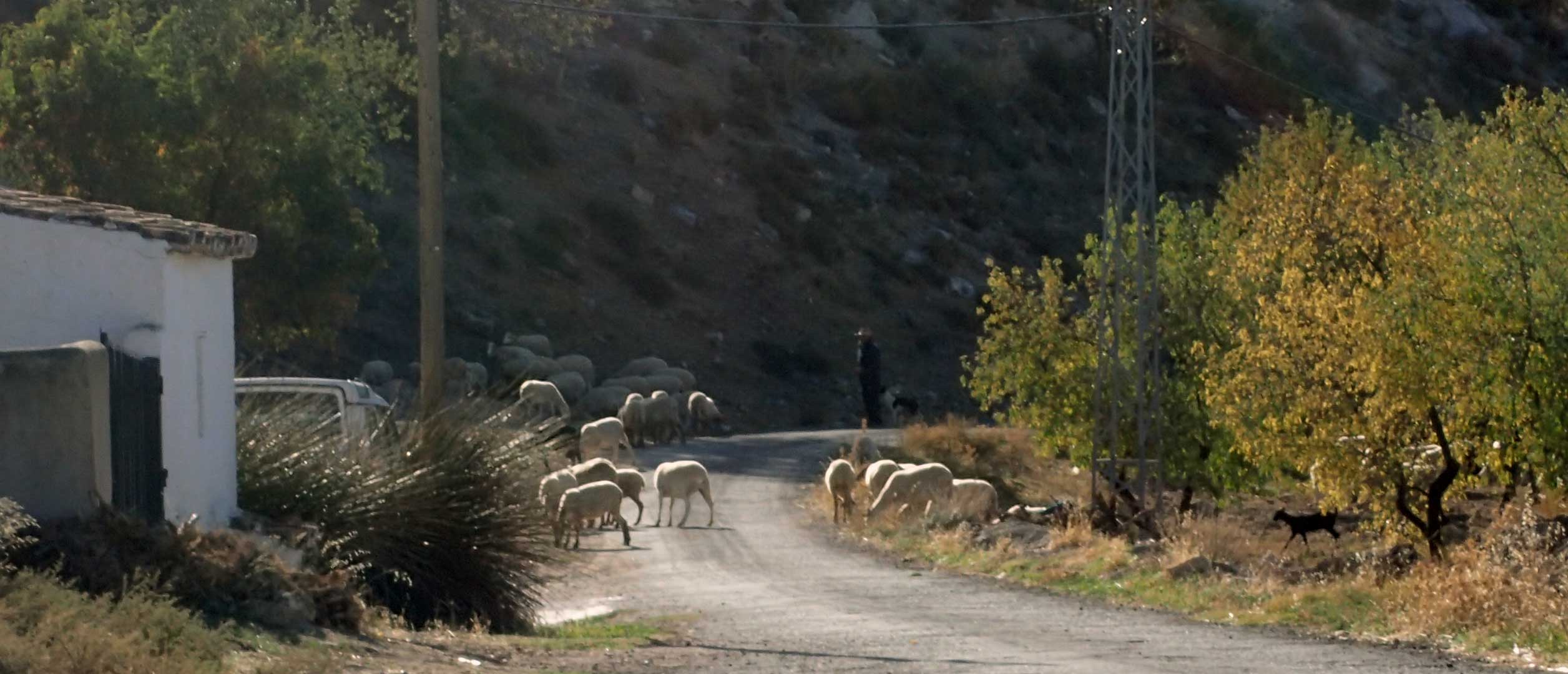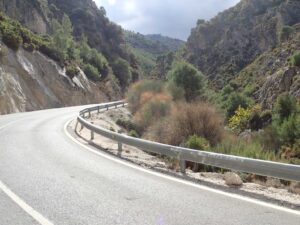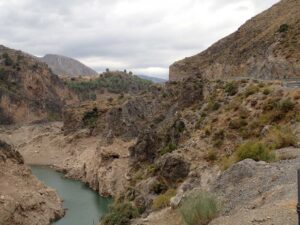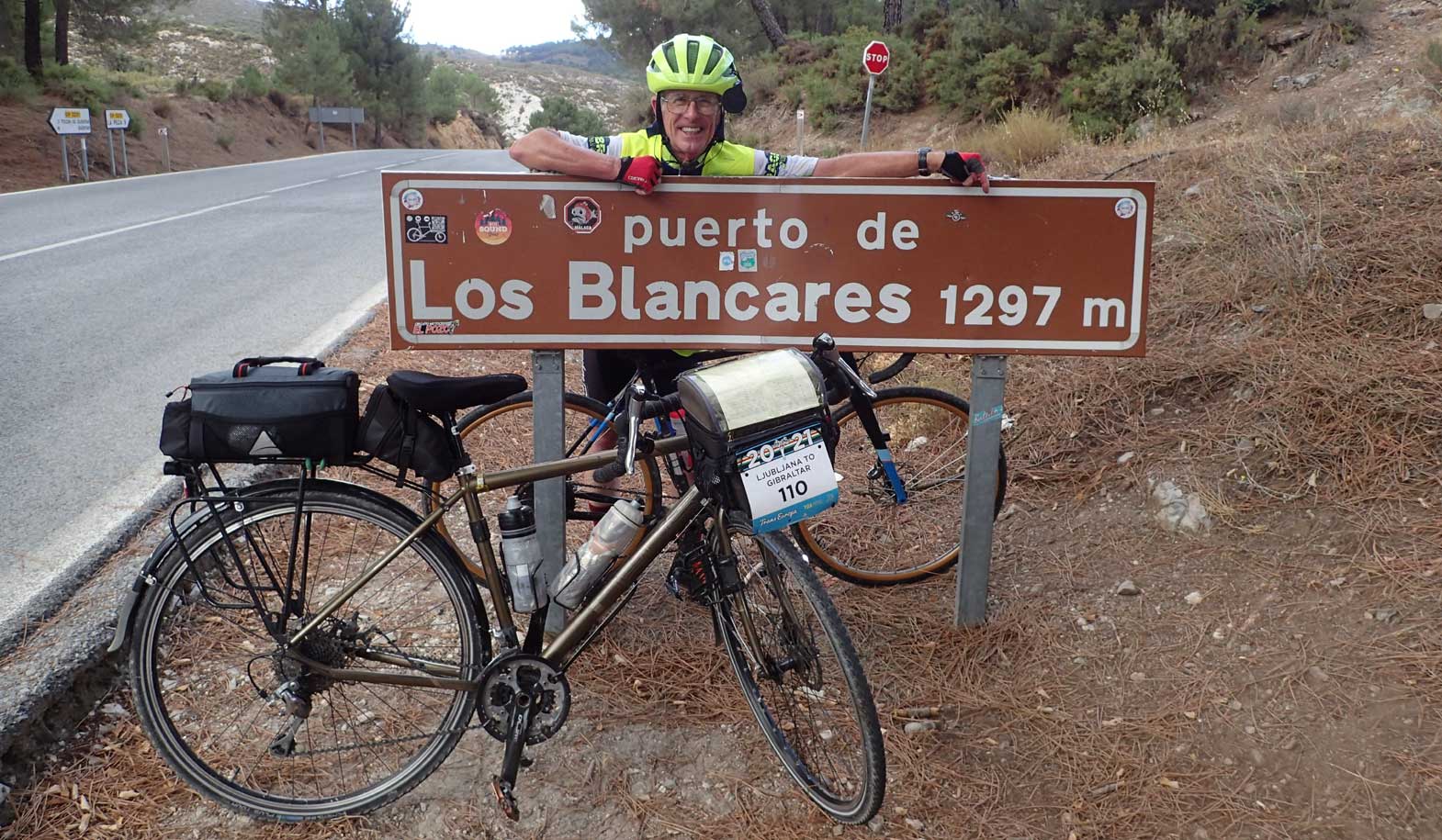Pirika to Lake Toya
June 17, 2023
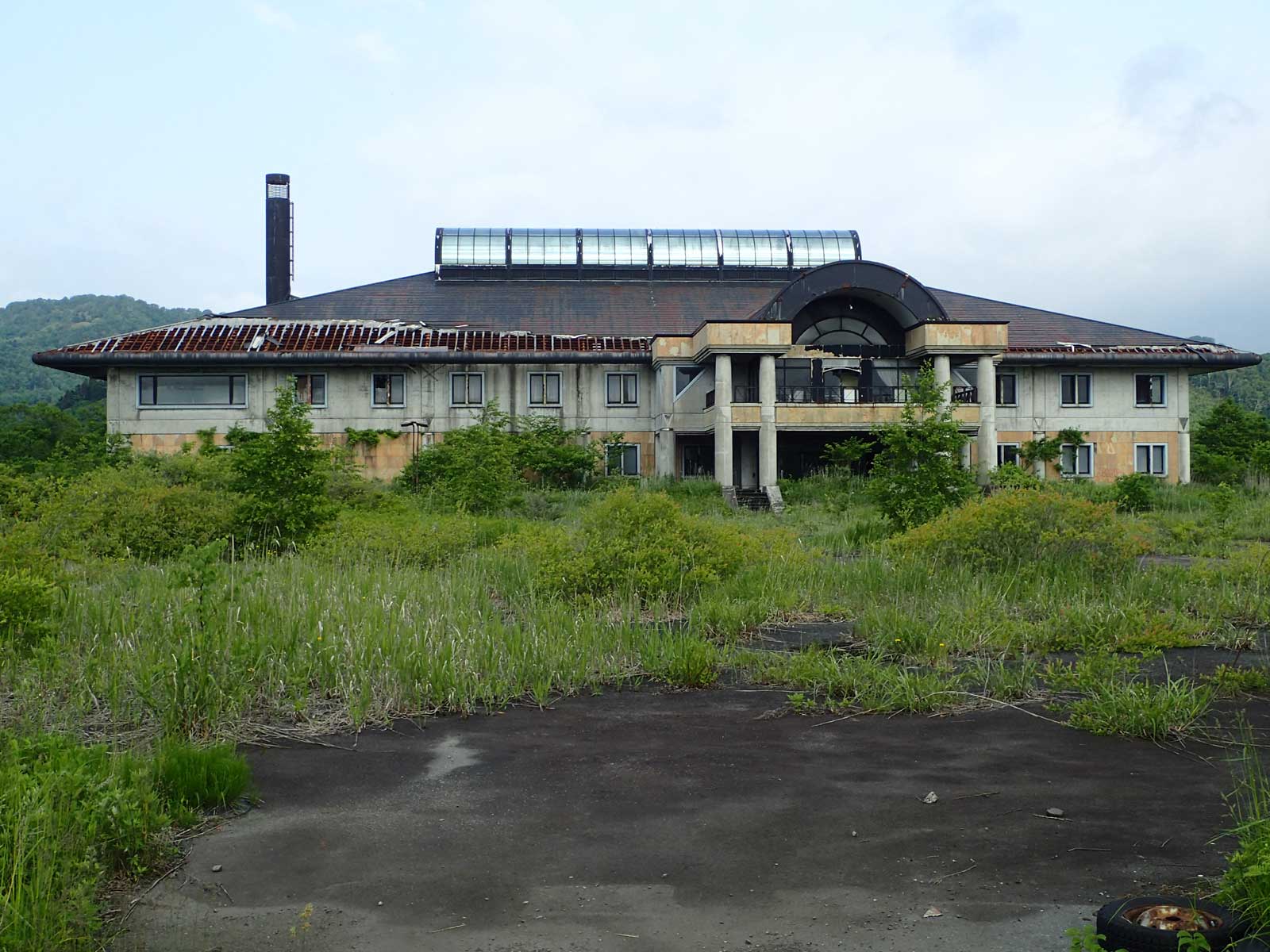
Today was the first of our last three rides in Japan. It was scheduled to be an easy 75 kilometers with a fairly flat 700 meters of climbing. However, that route was set up over five years ago and the current experience found that there were three tunnels on that original route with heavy traffic. TDA decided that it was unsafe and scouted out a new route to avoid the danger. That route jumped the distance from 75 kilometers to 131 and the climbing double the original 700 meters. Welcome to your day Bob.
Let me say that there have been longer rides and more climbing. The distance and climbing are things that I am built for and used to. However, when your mind has been set on a day to loaf along and now you need to get hard and gritty, it takes a bit of mental adjustment. All part of the adventure when you tour by bike, just suck it up and ride.
The ride was through a lot of countryside very similar to the places we have already been. I decided not to bother with more pictures of rice paddies and volcanic mountains. However there were a few things of interest.
Throughout the island of Hokkaido we have come across buildings that have been abandoned. Some have fallen in upon themselves while others seem to be in the process of doing so. Some are nothing more than shacks but others seem quite elaborate. In a land prone to earthquakes and tsunamis, things often lack permanence. The Japanese try to consider these threats when they build and they often build with the idea that nothing will last more than twenty or thirty years. Tall buildings are seldom seen outside of Tokyo and even the big hotels seem to top out at twenty stories. Of course there are exceptions and the Japanese are masters of building with materials and engineering that will withstand what the planet throws at them up to a point.
Another interesting sight was an ostrich farm. One of our riders decided to get personal with the birds and the bird decided to try to snatch his cell phone. He imagined that the bird may have wanted to phone its relatives back in South Africa.
Eventually, through ups and downs and zig-zaging turns that moved us in anything but a straight line we came to our evening destination, Lake Toya. The lake fills an ancient caldera of a still active volcano. While the volcano is still active, it is not still belching smoke and tossing lava and rocks the way it would if it was erupting. Active means that it may vent form time to time with time being measured in centuries and not years. Seems fairly safe for now and the Japanese flock to the Lake for summer recreation.
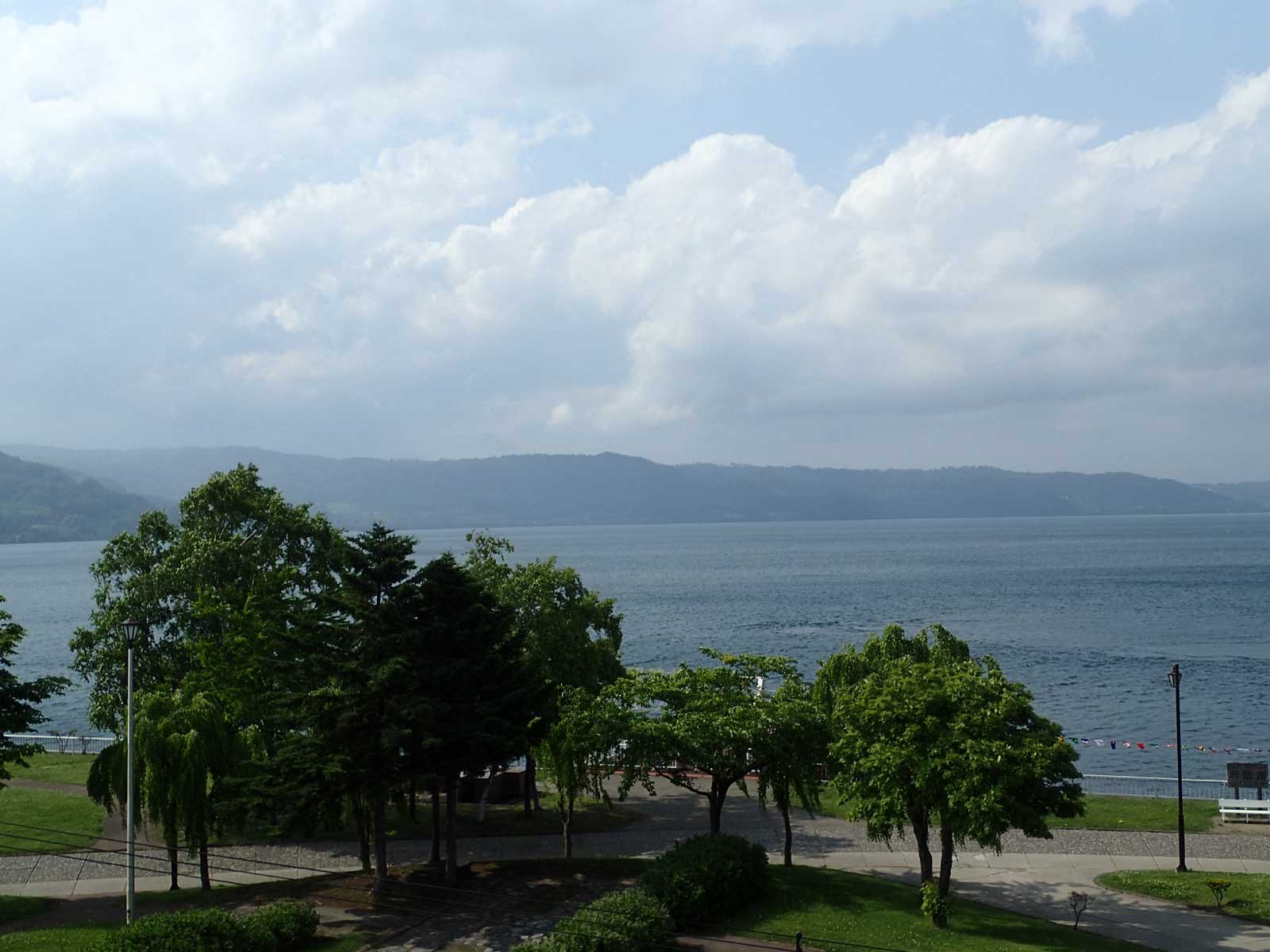

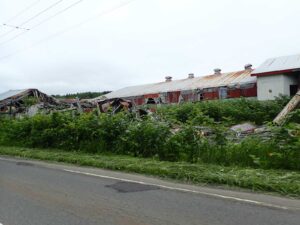

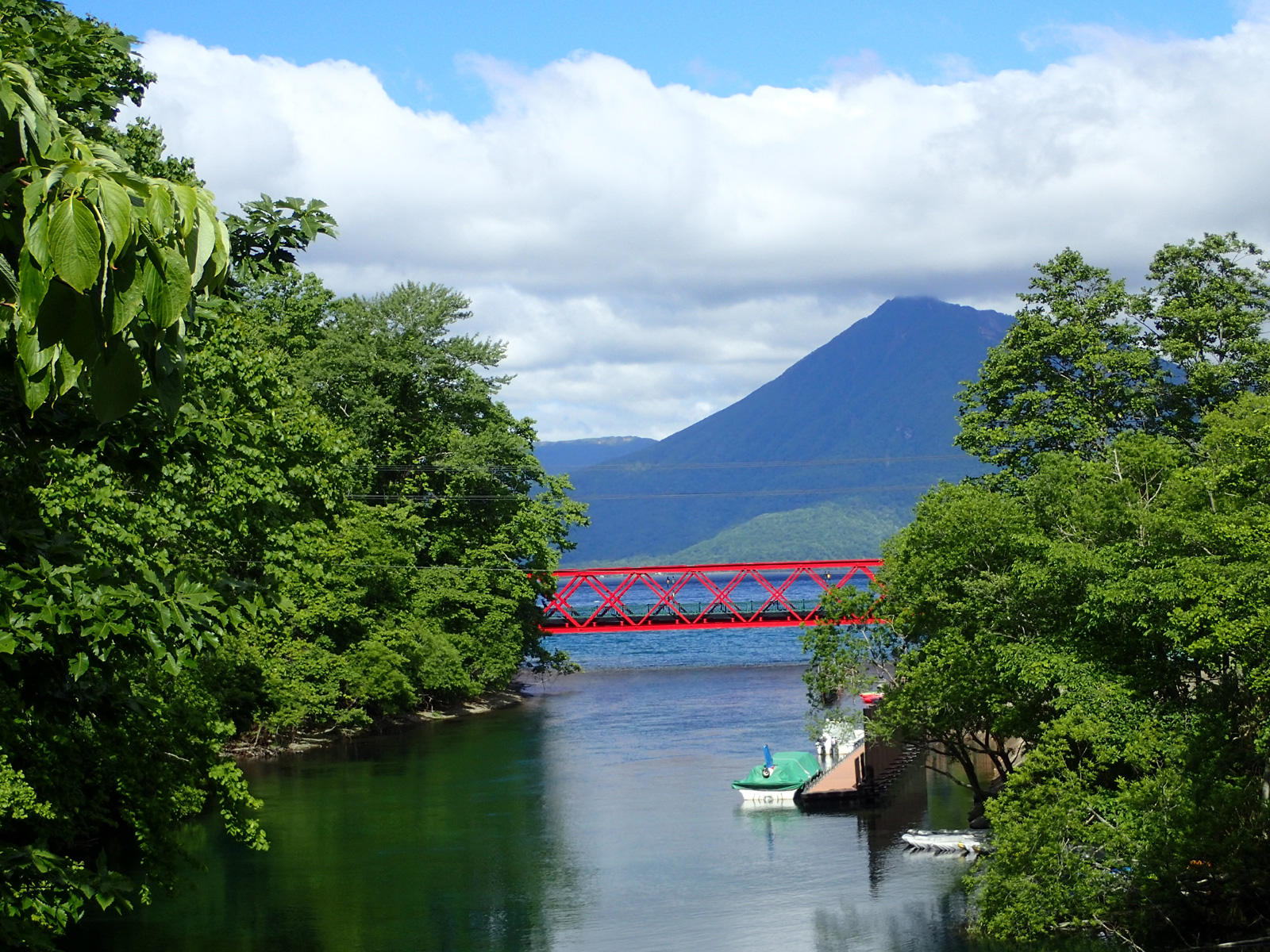
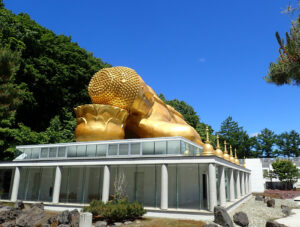
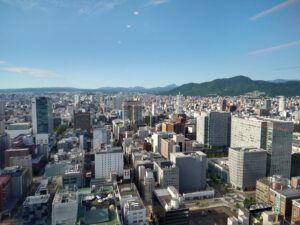
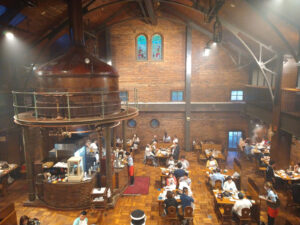

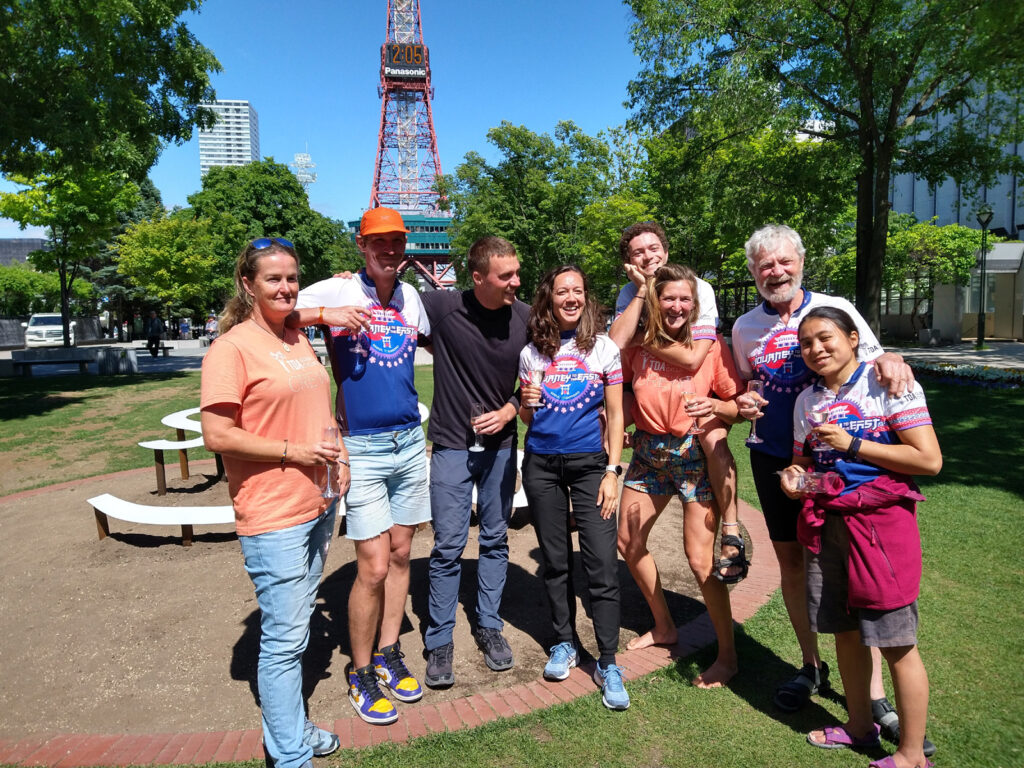
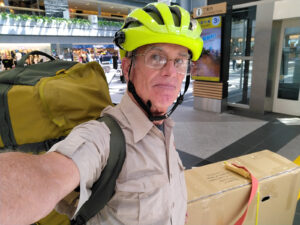

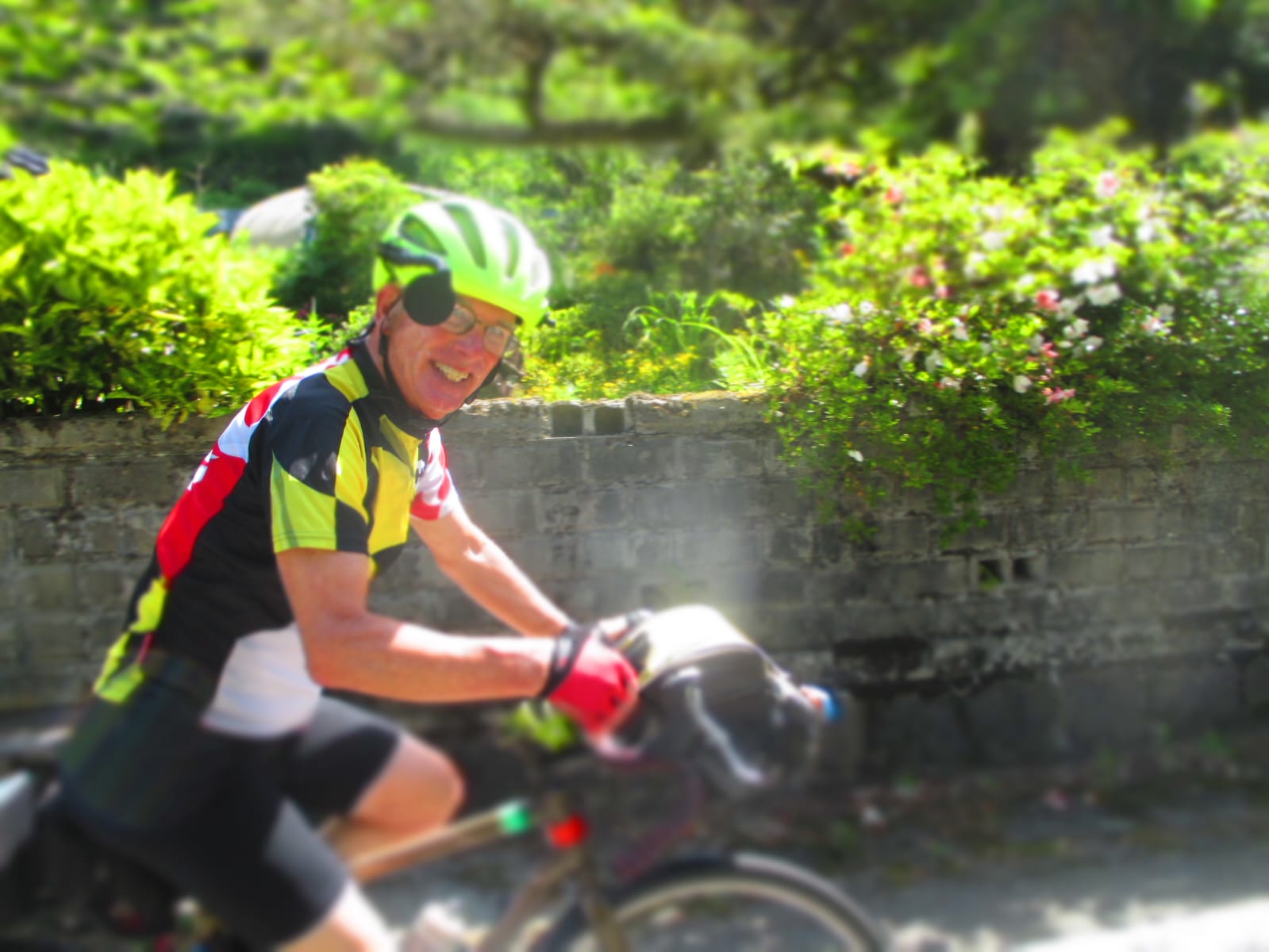

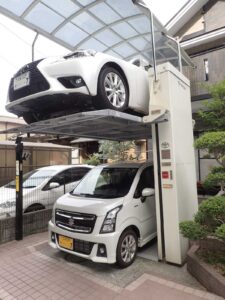

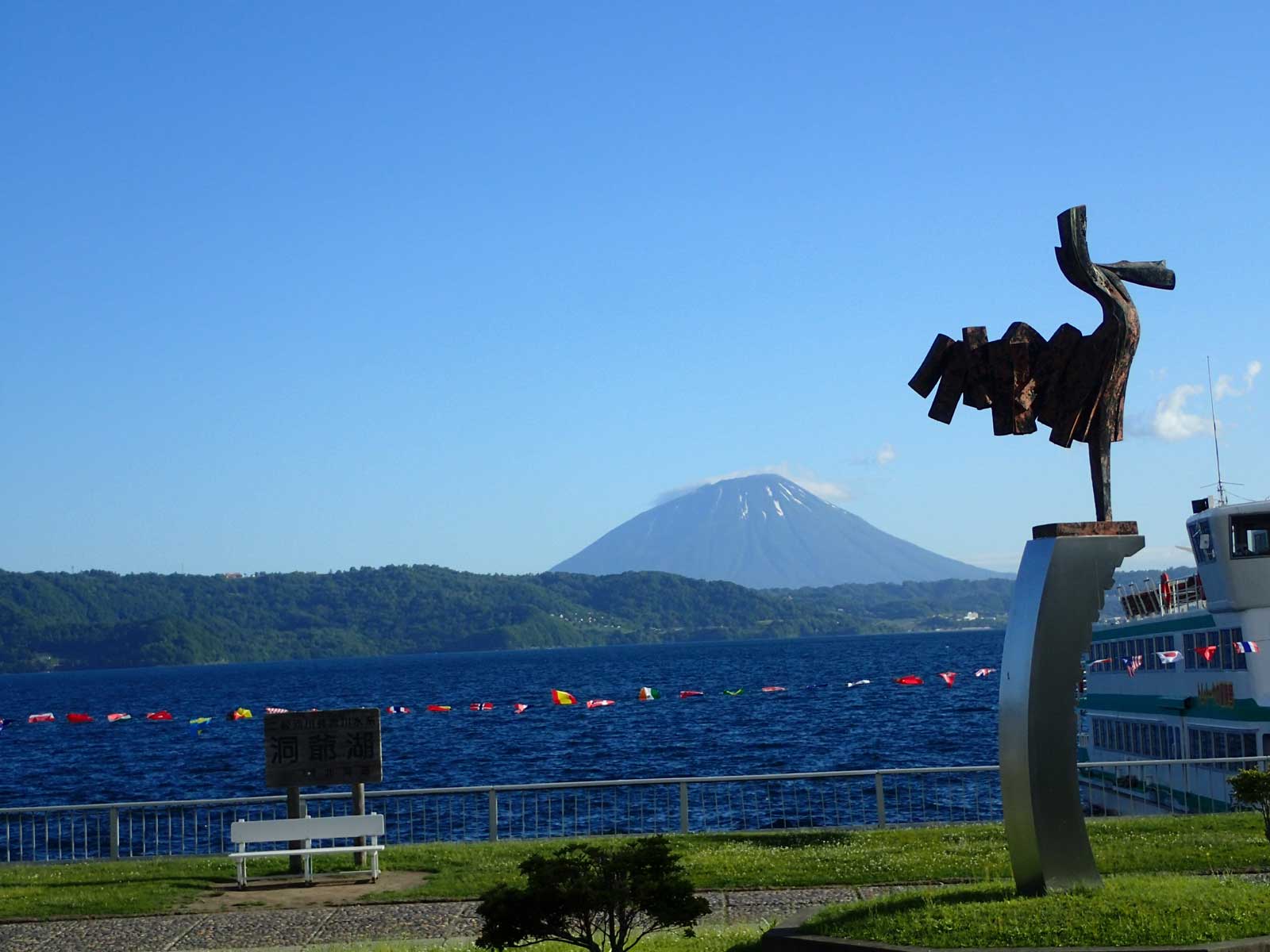
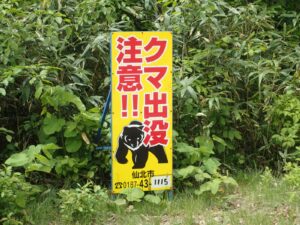
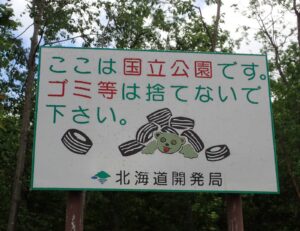
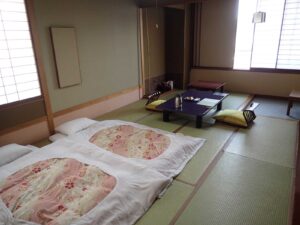

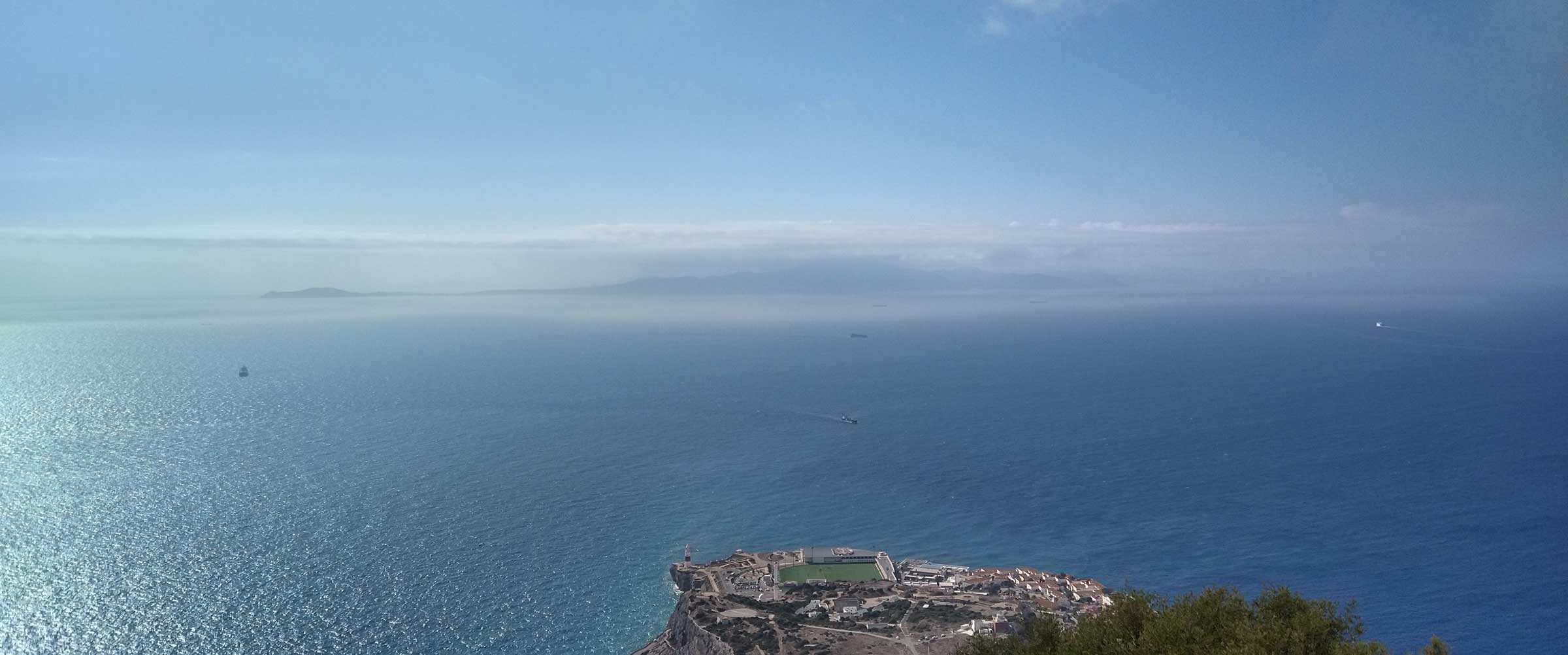
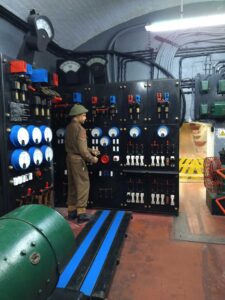
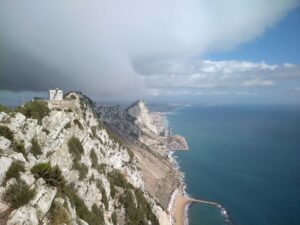 The hike takes you either up a roadway to the top or along a rugged path that follows the contour of land as it climbs and dips along the steep limestone sides of the terrain. We chose the rugged path with its many rock steps and outstanding views of the Mediterranean sea and the continent of Africa just fifteen miles across the straits of Gibraltar. The path leads you past the fortified gun placements, many from World War Two but some from the long history of this British fortress. We climbed our way to the top where the big nine inch guns commanded the straits and could reach out and touch any who should not be allowed to pass. Under the highest battery is a museum display preserving the look of the extensive works required to command these weapons of destruction.
The hike takes you either up a roadway to the top or along a rugged path that follows the contour of land as it climbs and dips along the steep limestone sides of the terrain. We chose the rugged path with its many rock steps and outstanding views of the Mediterranean sea and the continent of Africa just fifteen miles across the straits of Gibraltar. The path leads you past the fortified gun placements, many from World War Two but some from the long history of this British fortress. We climbed our way to the top where the big nine inch guns commanded the straits and could reach out and touch any who should not be allowed to pass. Under the highest battery is a museum display preserving the look of the extensive works required to command these weapons of destruction.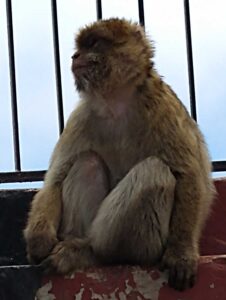
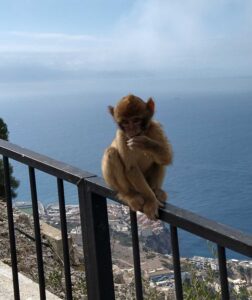 Gibraltar is also home to a troop of Macaques, a cousin of ours from Northern Africa. One local legend says that they came to Gibraltar through a network of caverns that extend under the straits to Morocco. If so, no one has ever found any such a subterranean connection despite determined efforts to do so. It is far more likely that the monkeys arrived on some ship long forgotten in the mists of time. Today they are both an attraction and a pest. They are quite tame and will pose for any number of photographs but watch out if you have anything that looks like food.
Gibraltar is also home to a troop of Macaques, a cousin of ours from Northern Africa. One local legend says that they came to Gibraltar through a network of caverns that extend under the straits to Morocco. If so, no one has ever found any such a subterranean connection despite determined efforts to do so. It is far more likely that the monkeys arrived on some ship long forgotten in the mists of time. Today they are both an attraction and a pest. They are quite tame and will pose for any number of photographs but watch out if you have anything that looks like food.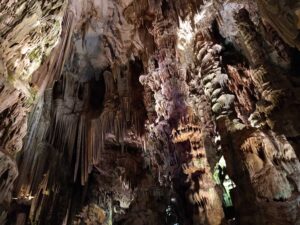 St. Michael’s cave is well worth the visit with some of the most beautiful examples of flow-stone that I have ever seen. While the public portion of the cave is fairly small, the lighting effects and light show really highlight these wonderful limestone formations. There is a good deal of the cave that is not open to the public and there is still exploration of the cave network that undermines Gibraltar. Evidence of Neanderthal occupation from around 40,000 years ago has recently been found in one location. In addition to the caves, there are many miles of military tunnels from Gibraltar’s long history as a fortress. Today it still serves as Britain’s watch-post on the Mediterranean and a projection of England’s military prowess. Spain would like to have it back but that does not appear to be in the cards.
St. Michael’s cave is well worth the visit with some of the most beautiful examples of flow-stone that I have ever seen. While the public portion of the cave is fairly small, the lighting effects and light show really highlight these wonderful limestone formations. There is a good deal of the cave that is not open to the public and there is still exploration of the cave network that undermines Gibraltar. Evidence of Neanderthal occupation from around 40,000 years ago has recently been found in one location. In addition to the caves, there are many miles of military tunnels from Gibraltar’s long history as a fortress. Today it still serves as Britain’s watch-post on the Mediterranean and a projection of England’s military prowess. Spain would like to have it back but that does not appear to be in the cards.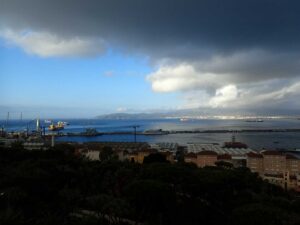 More than a tourist attraction Gibraltar is still a busy port with dry docks and facilities for shipbuilding. Still, tourism is the fuel for its economic engine and that fuel seems to be taking over more and more of the Rock’s real estate. The place is already crowded with steep curving streets, fast moving vehicles and pedestrians who must feel like targets in some road warrior video game. I loved my short visit but would have ulcers if I had to live with this traffic every day.
More than a tourist attraction Gibraltar is still a busy port with dry docks and facilities for shipbuilding. Still, tourism is the fuel for its economic engine and that fuel seems to be taking over more and more of the Rock’s real estate. The place is already crowded with steep curving streets, fast moving vehicles and pedestrians who must feel like targets in some road warrior video game. I loved my short visit but would have ulcers if I had to live with this traffic every day.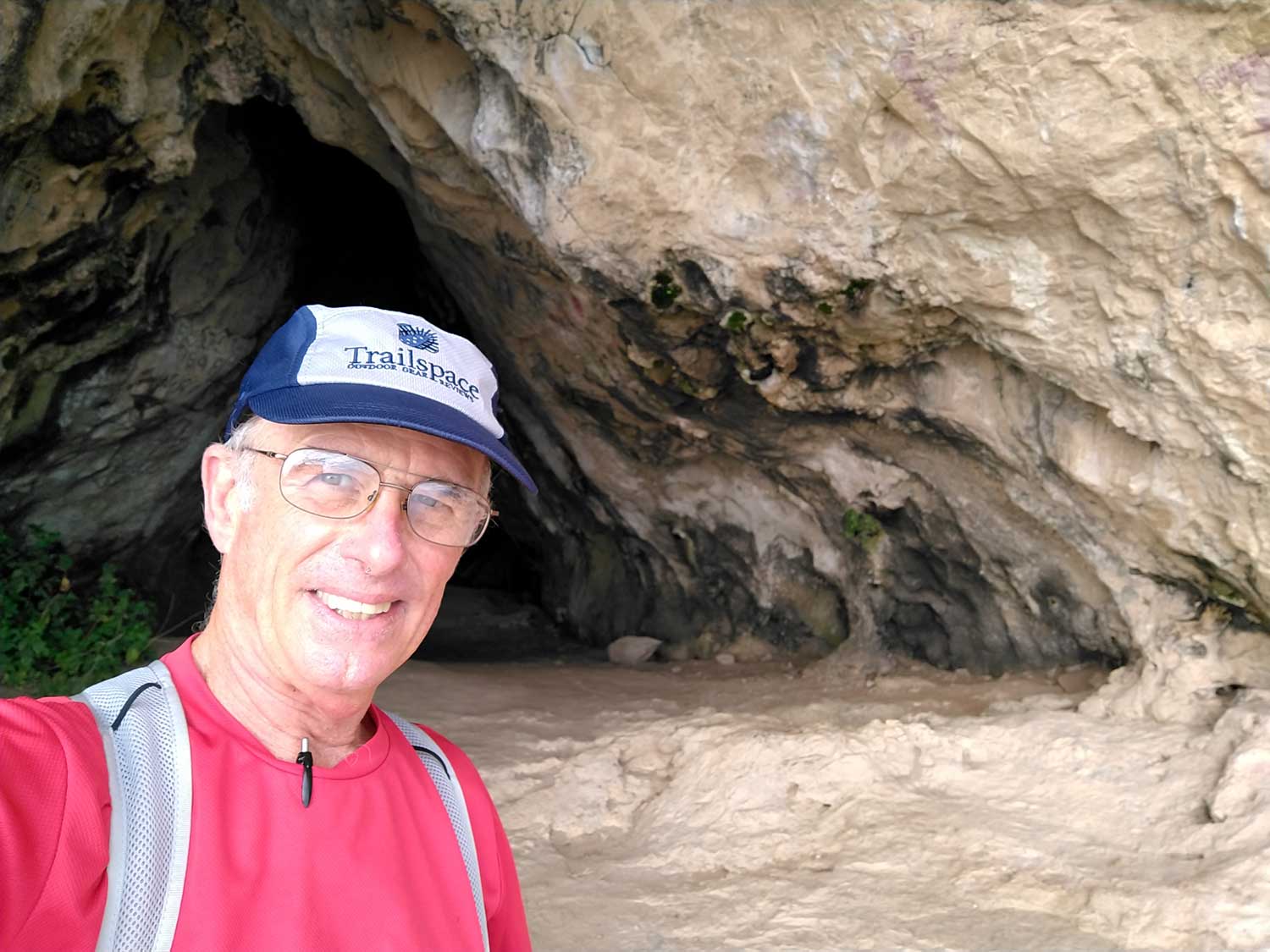
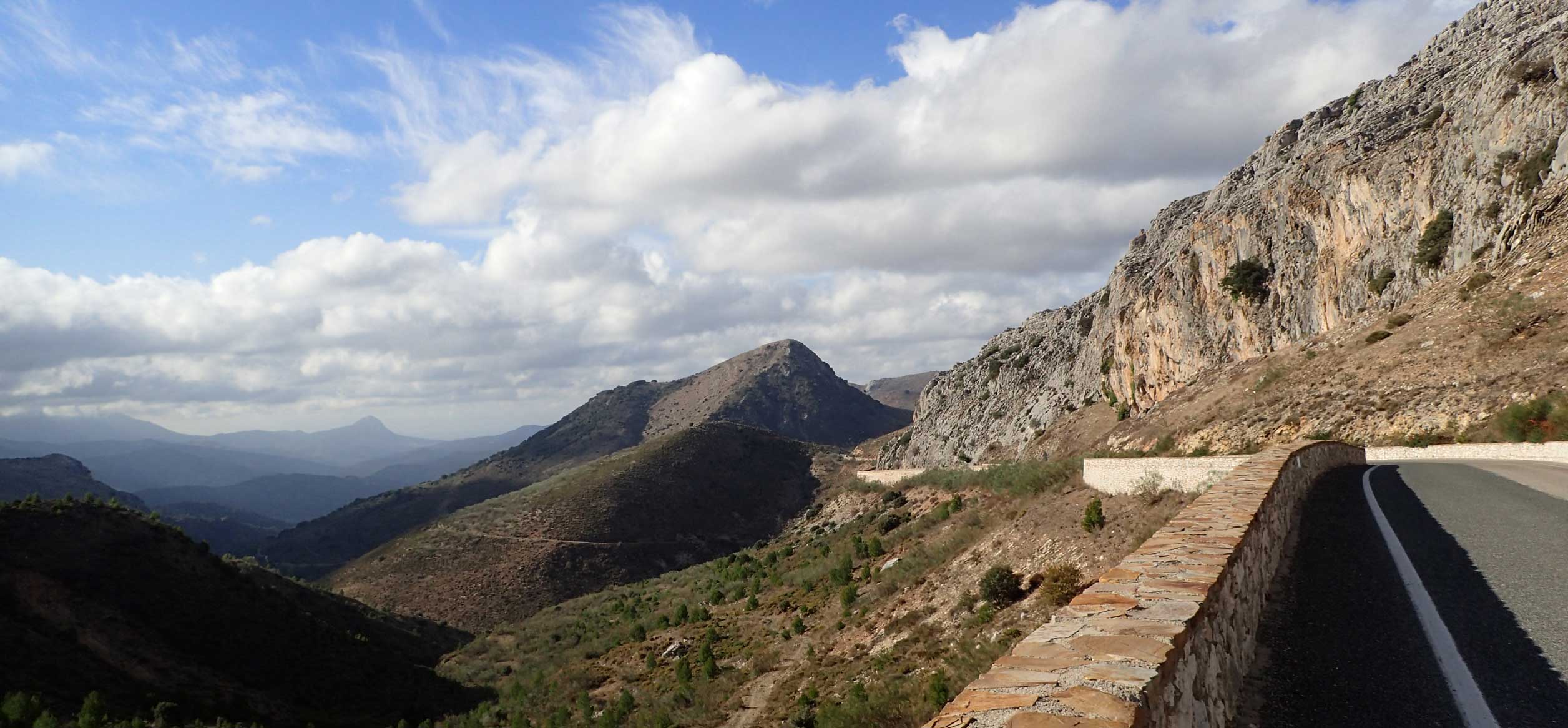
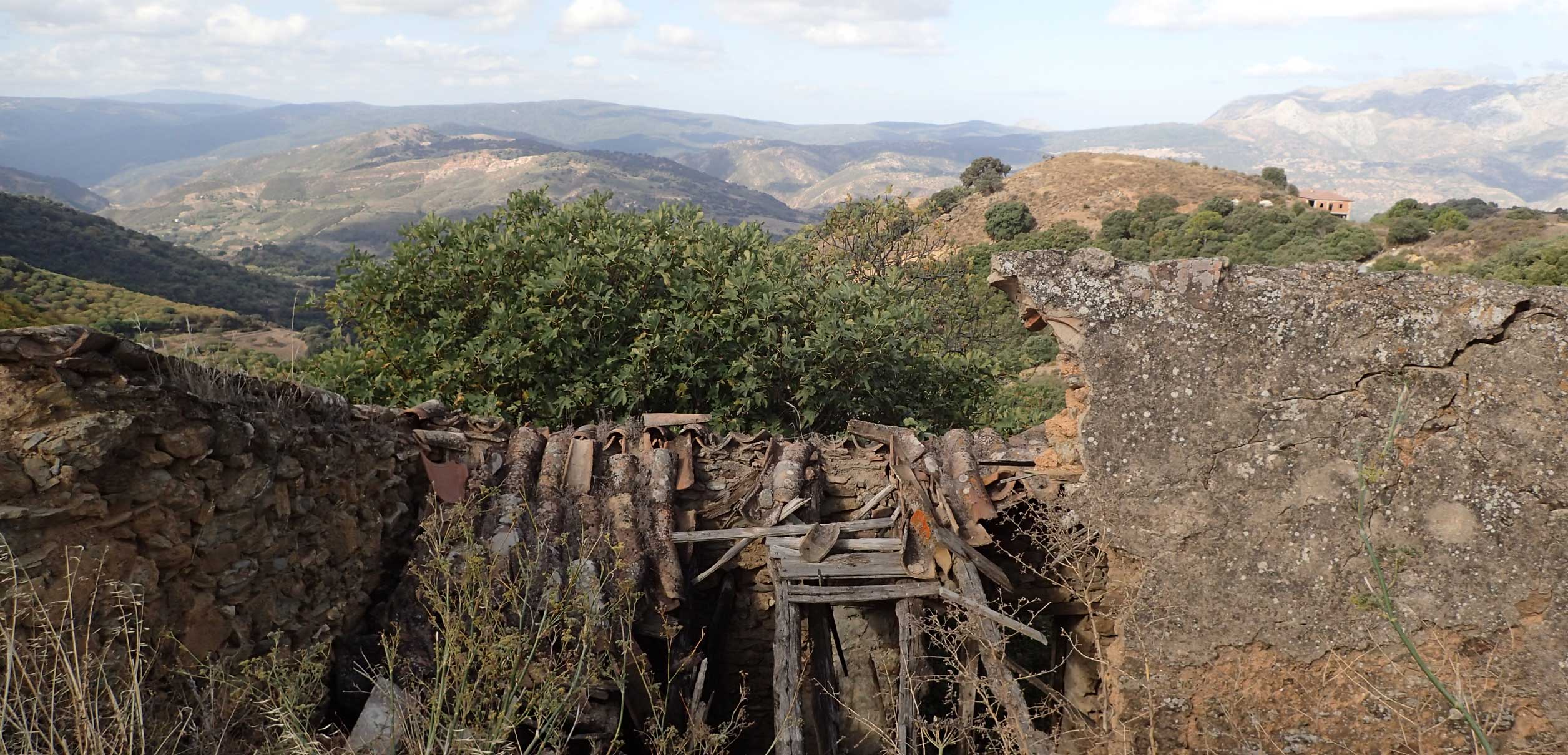
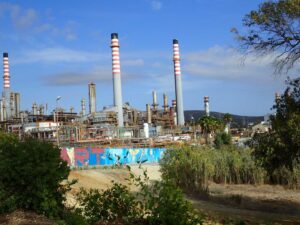 The last few kilometers passed through the industrial port city of Algeciras, Spain with its refineries and chemical plants. If I did not know better I could imagine that I was in New Jersey.
The last few kilometers passed through the industrial port city of Algeciras, Spain with its refineries and chemical plants. If I did not know better I could imagine that I was in New Jersey.

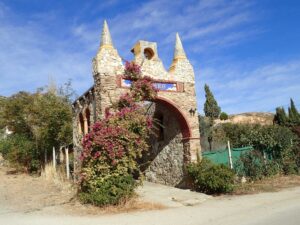 Our next to the last day of riding turned out to be more of a challenge than we anticipated. We had assumed that from Granada it would be mostly downhill to Gibraltar but it was not to be. First we had to spend our last Spanish night in the city of Ronda and Ronda sits high above a deep gorge. To get to Ronda we passed through the usual olive groves and into some foothills with steep climbs along rural back roads. Instead of be more downs than ups we had to climb a total of 1325 meters (4300 feet) and most of that during the second 45 kilometers of our 90 kilometer ride. While we have done longer rides with more climbing, today just seemed especially hard. Maybe it was because our expectations did not match reality. In any event, after a ride through some beautiful countryside we finally arrived in Ronda and our last night in Spain.
Our next to the last day of riding turned out to be more of a challenge than we anticipated. We had assumed that from Granada it would be mostly downhill to Gibraltar but it was not to be. First we had to spend our last Spanish night in the city of Ronda and Ronda sits high above a deep gorge. To get to Ronda we passed through the usual olive groves and into some foothills with steep climbs along rural back roads. Instead of be more downs than ups we had to climb a total of 1325 meters (4300 feet) and most of that during the second 45 kilometers of our 90 kilometer ride. While we have done longer rides with more climbing, today just seemed especially hard. Maybe it was because our expectations did not match reality. In any event, after a ride through some beautiful countryside we finally arrived in Ronda and our last night in Spain.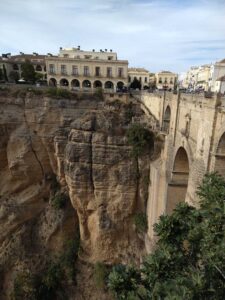
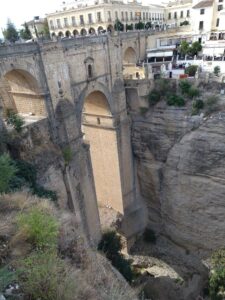 Ronda is an interesting town and quite a tourism destination. It sits high above a deep and narrow gorge and offer some fantastic views and even some cliff side dining if you like. The town is also known for it bullfighting museum and well preserved bullfighting arena. Is is also known for being the final resting place for the ashes of Orson Welles.
Ronda is an interesting town and quite a tourism destination. It sits high above a deep and narrow gorge and offer some fantastic views and even some cliff side dining if you like. The town is also known for it bullfighting museum and well preserved bullfighting arena. Is is also known for being the final resting place for the ashes of Orson Welles. 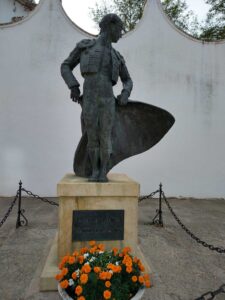
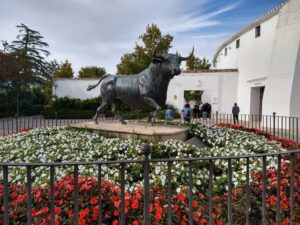 was fascinated by the Spanish bullfighting culture and even took part in a few amateur bullfights as a teenager. Like Hemingway he sided with the republican side during the Spanish Civil War using his vocal talents on his radio program to influence the intellectual community to support their cause. He and Hemingway eventually met during the production of Hemingway’s movie, The Spanish Earth, which Welles narrated.
was fascinated by the Spanish bullfighting culture and even took part in a few amateur bullfights as a teenager. Like Hemingway he sided with the republican side during the Spanish Civil War using his vocal talents on his radio program to influence the intellectual community to support their cause. He and Hemingway eventually met during the production of Hemingway’s movie, The Spanish Earth, which Welles narrated.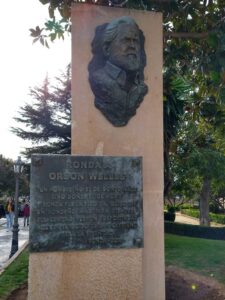 Welles strongest connection with Spain was through the Spanish actress,
Welles strongest connection with Spain was through the Spanish actress, 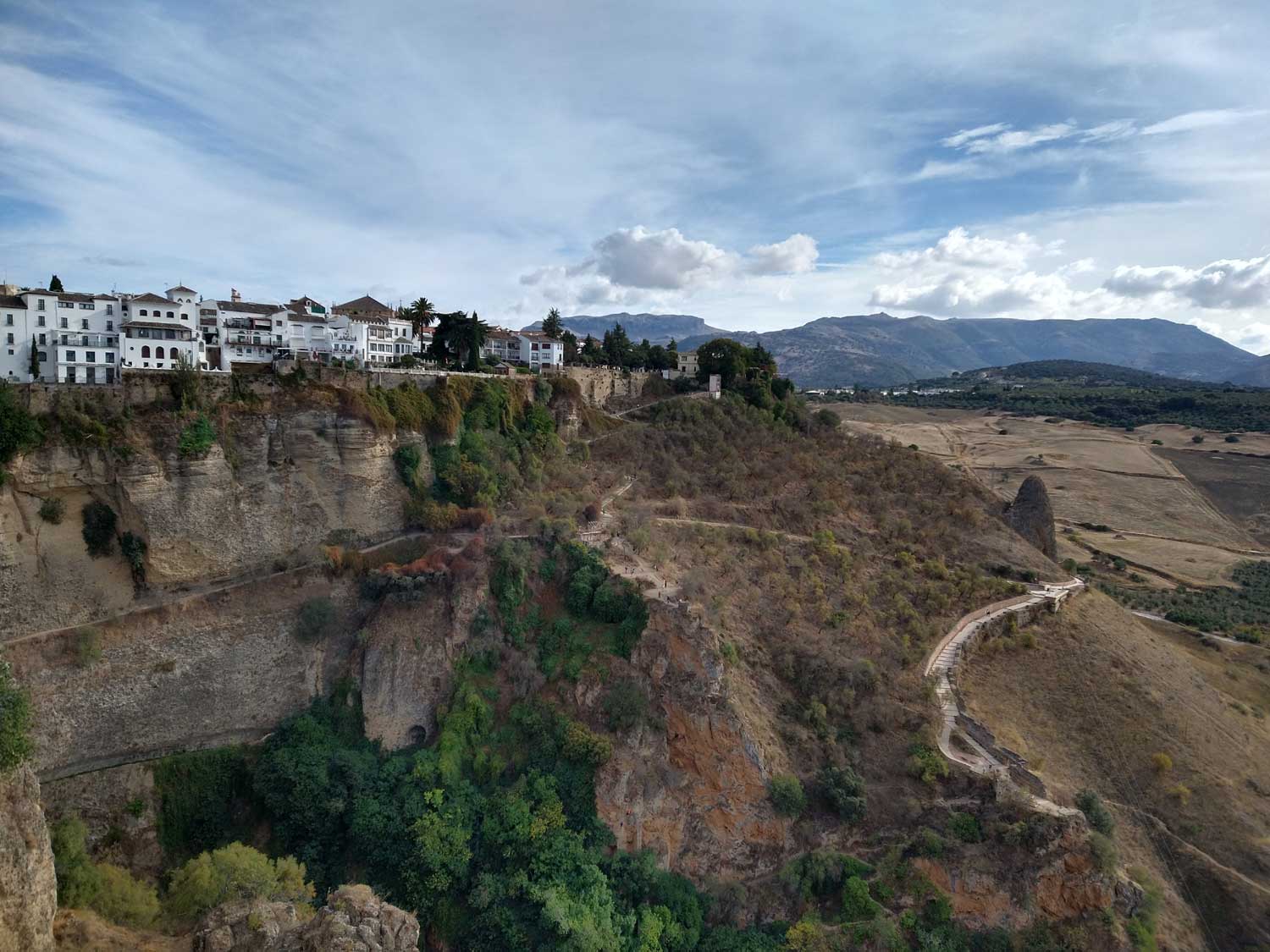
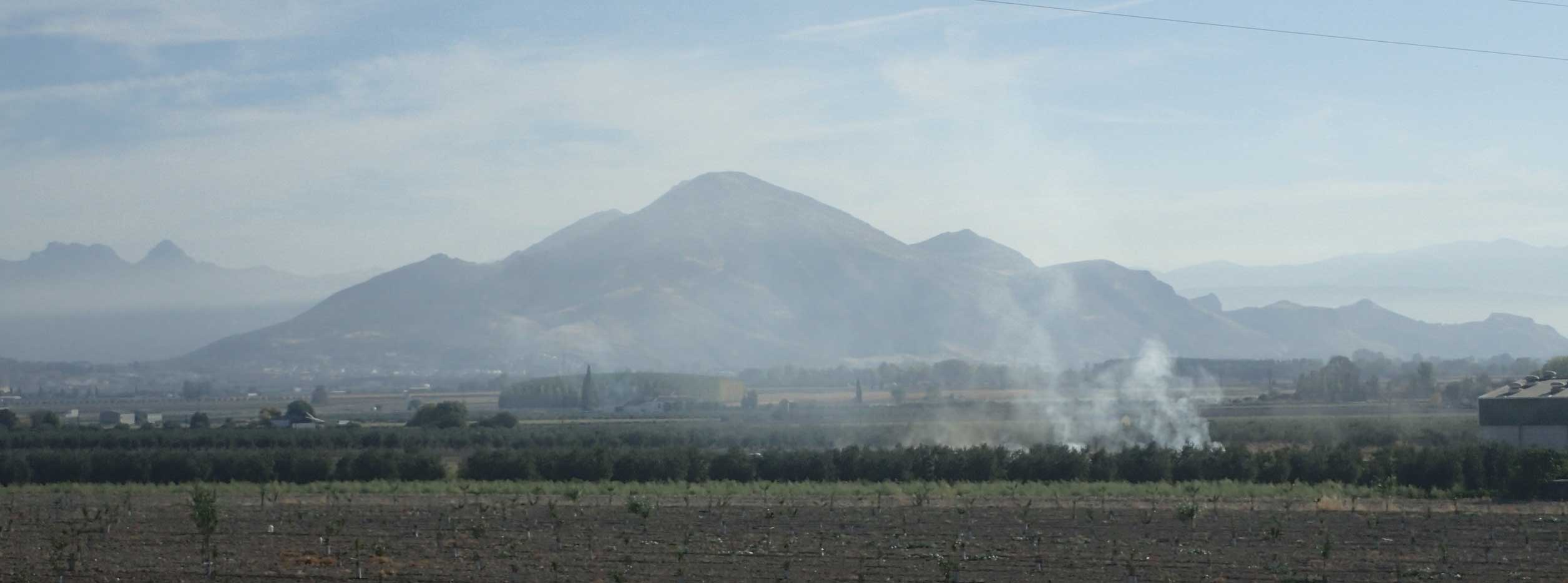
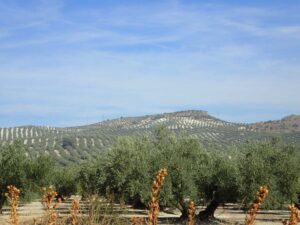 As the sun is rising ever later in the day so too are our daily journeys beginning later. We left Granada at a leisurely 9:30 for a 110 kilometer ride to our next overnight stay in the town of Antequera. Leaving the city we were quickly back into the olive plantations that seem to dominate this part of Spain. They truly are everywhere extending far up mountainsides wherever there is land that can sustain them. Irrigation networks throughout the region move the water through what is essentially a fairly dry landscape. As with many things in Spain, even the aqueducts are built with an architectural flair.
As the sun is rising ever later in the day so too are our daily journeys beginning later. We left Granada at a leisurely 9:30 for a 110 kilometer ride to our next overnight stay in the town of Antequera. Leaving the city we were quickly back into the olive plantations that seem to dominate this part of Spain. They truly are everywhere extending far up mountainsides wherever there is land that can sustain them. Irrigation networks throughout the region move the water through what is essentially a fairly dry landscape. As with many things in Spain, even the aqueducts are built with an architectural flair.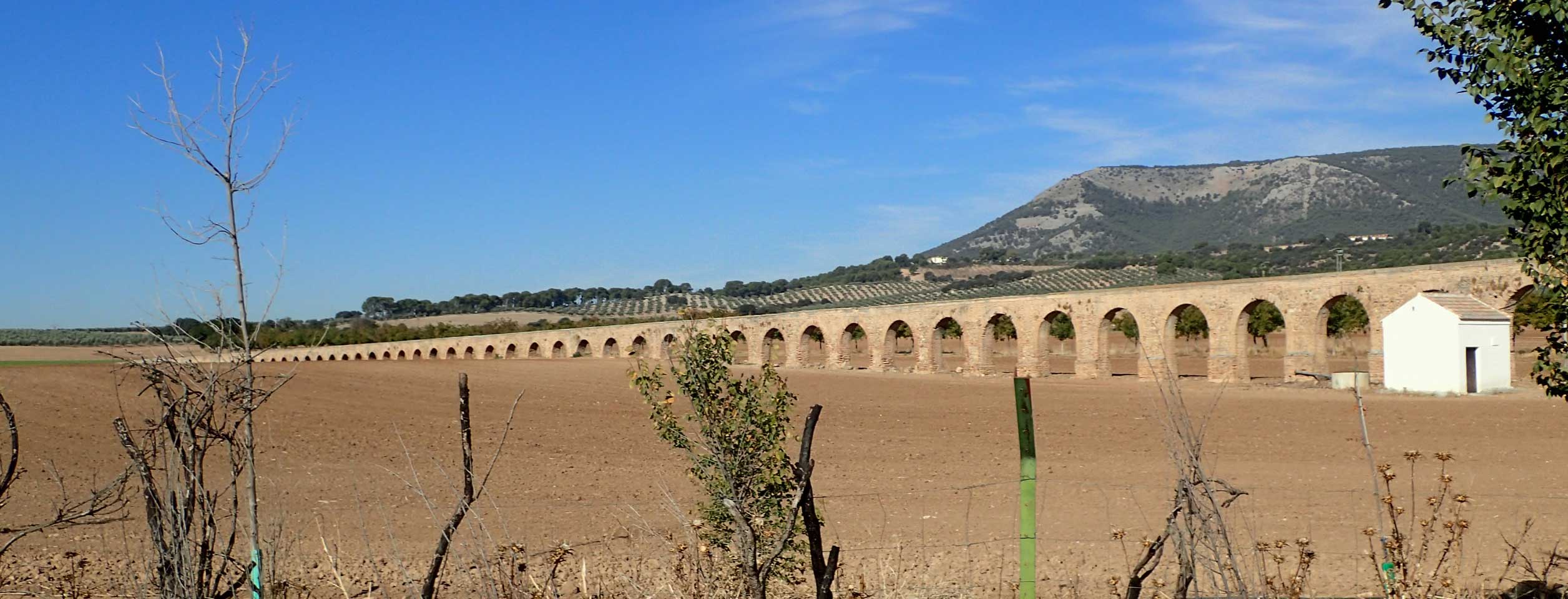
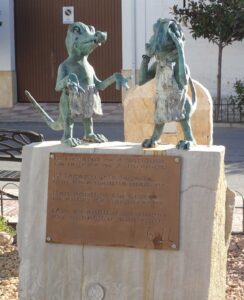
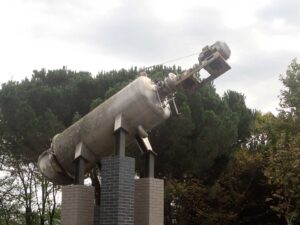 Along the way we passed through many small towns carved into the landscape. Often they have unusual artworks decorating their traffic circles and even some that are hard to understand as in the two examples I have shown.
Along the way we passed through many small towns carved into the landscape. Often they have unusual artworks decorating their traffic circles and even some that are hard to understand as in the two examples I have shown.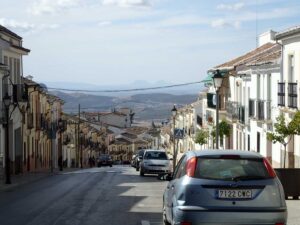 The skies have had a smoky quality ever since we entered into any orchard farming region and this is especially true of the Andalusian region in the south of Spain. Orchards require pruning to keep the trees productive and this is especially true of olive trees. The fall seems to be the best time to do this and the result is a fog like layer of smoke that fills the horizon. Every orchard seems to have plumes of smoke rising from multiple points. Some are small fires and some like then one in the photo are the result of larger pruning activities. Riding through these, especially when going uphill can result in some unpleasant breathing but thankfully, such episodes are short. in duration.
The skies have had a smoky quality ever since we entered into any orchard farming region and this is especially true of the Andalusian region in the south of Spain. Orchards require pruning to keep the trees productive and this is especially true of olive trees. The fall seems to be the best time to do this and the result is a fog like layer of smoke that fills the horizon. Every orchard seems to have plumes of smoke rising from multiple points. Some are small fires and some like then one in the photo are the result of larger pruning activities. Riding through these, especially when going uphill can result in some unpleasant breathing but thankfully, such episodes are short. in duration.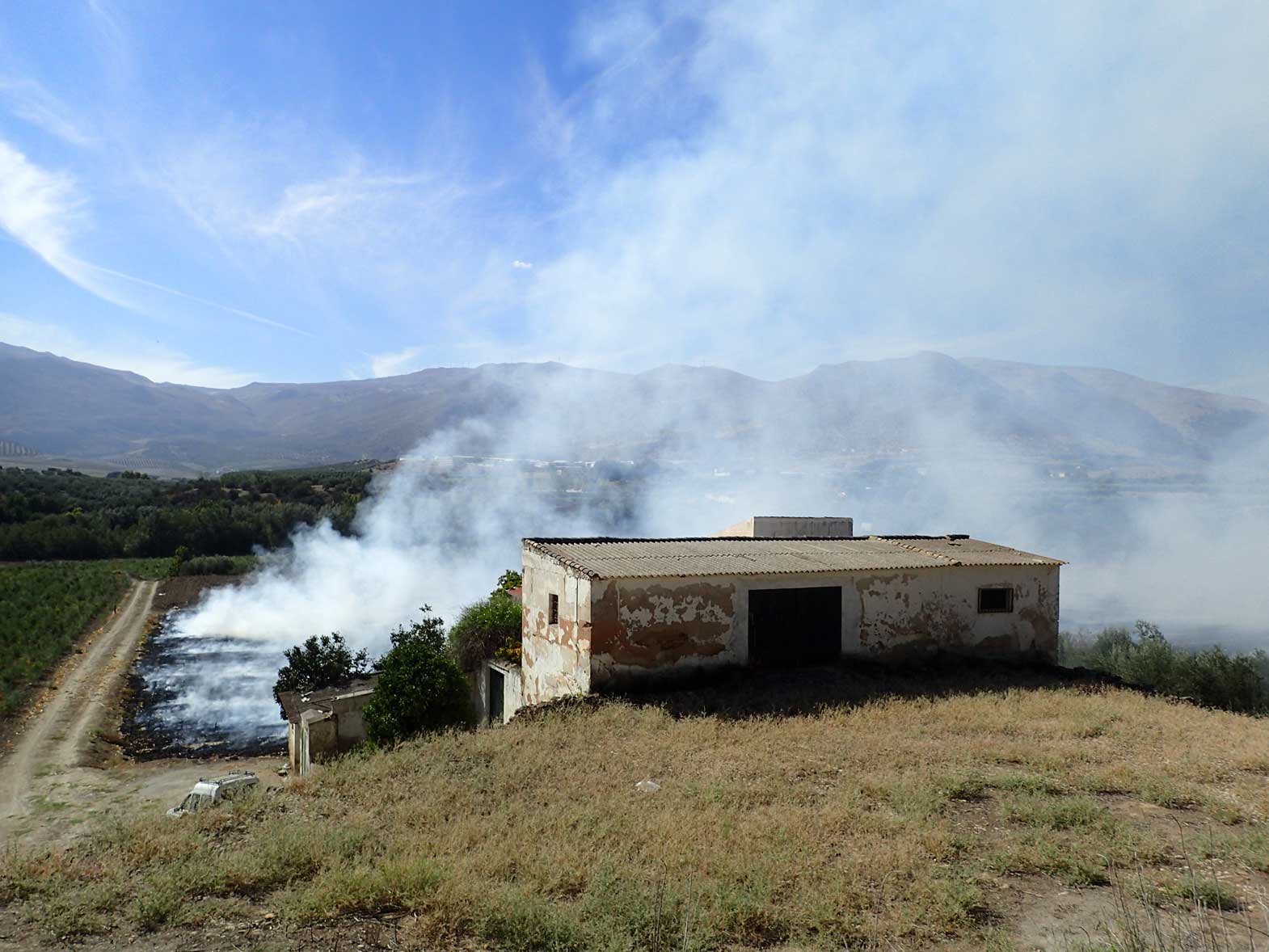

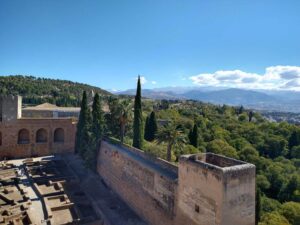 Granada’s big attraction is Alhumbra. This is a magnificent fortress topping a high hill above the city that has been lovingly restored after a long and violent past. It was built over the remains of an old Roman fortress that was abandoned and allowed to fall into ruins, a fate that has happened to this location more than once over the centuries.
Granada’s big attraction is Alhumbra. This is a magnificent fortress topping a high hill above the city that has been lovingly restored after a long and violent past. It was built over the remains of an old Roman fortress that was abandoned and allowed to fall into ruins, a fate that has happened to this location more than once over the centuries.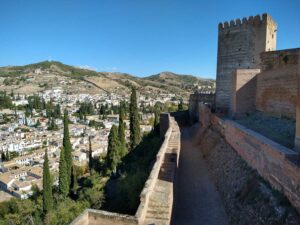 With the completion of the Christian Reconquista in 1492 the Sultan was tossed out and the palace became the royal court of Ferdinand and Isabella where Columbus received his royal endorsement for his chance encounter with America. Fred and Issy were buried there for awhile until the rent increases made relocation to a state sponsored location more affordable.
With the completion of the Christian Reconquista in 1492 the Sultan was tossed out and the palace became the royal court of Ferdinand and Isabella where Columbus received his royal endorsement for his chance encounter with America. Fred and Issy were buried there for awhile until the rent increases made relocation to a state sponsored location more affordable.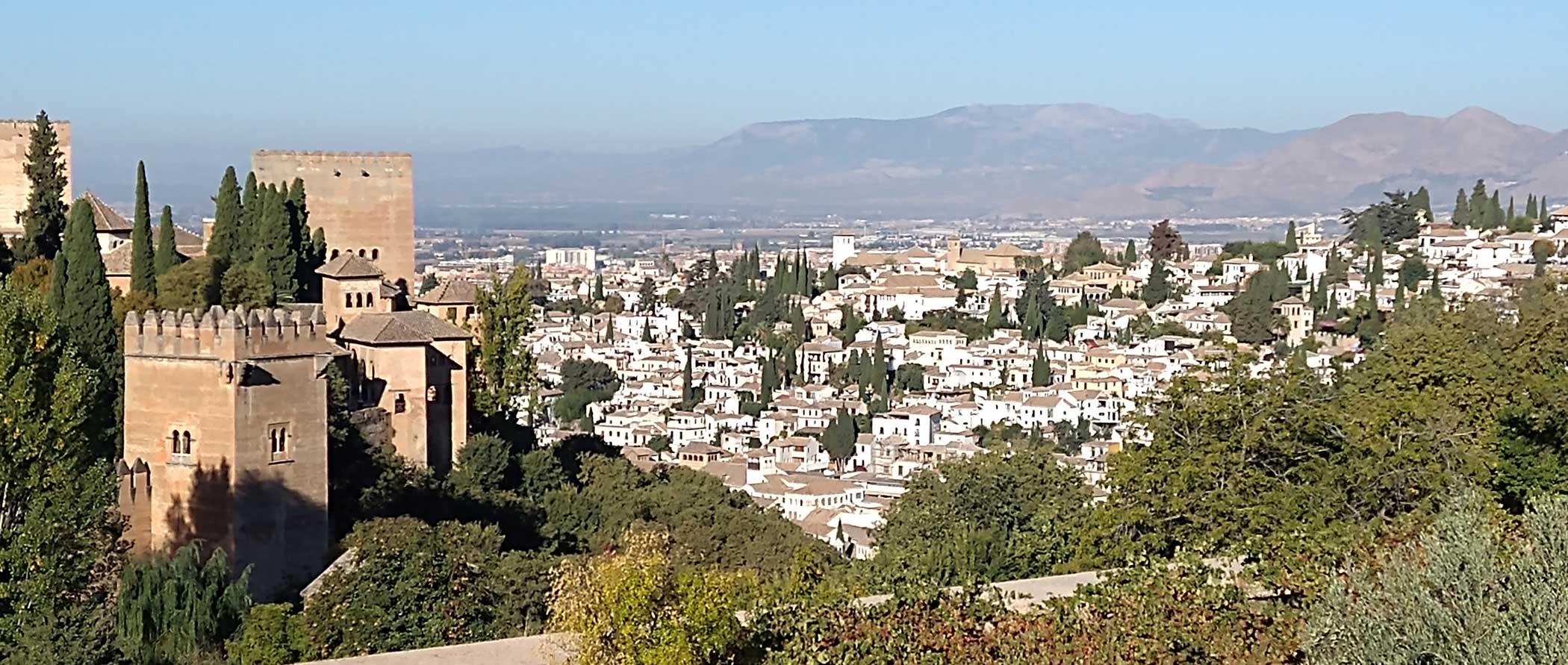
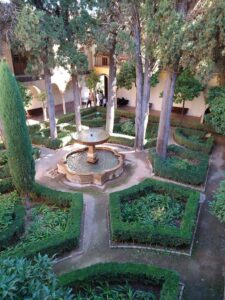
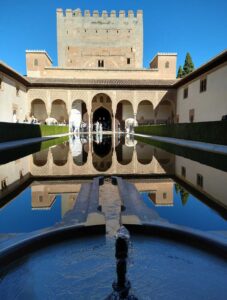 Regardless of what prompted the restoration, Alhambra today is magnificant. The gardens, fountains and restored palaces are well worth the time spent to see how this World Heritage Site must have looked in its glorious past. If you come, don’t just walk around, take a guided tour. The information they provide is well worth the additional cost. Be sure to bring your passport as identification is checked many times throughout a visit due to the large business in counterfeit admission tickets. As for anything else I have to say, I’ll let some pictures speak a thousand words.
Regardless of what prompted the restoration, Alhambra today is magnificant. The gardens, fountains and restored palaces are well worth the time spent to see how this World Heritage Site must have looked in its glorious past. If you come, don’t just walk around, take a guided tour. The information they provide is well worth the additional cost. Be sure to bring your passport as identification is checked many times throughout a visit due to the large business in counterfeit admission tickets. As for anything else I have to say, I’ll let some pictures speak a thousand words.